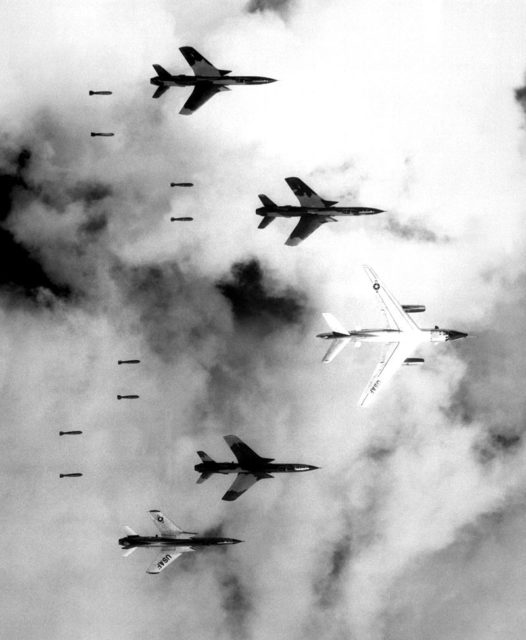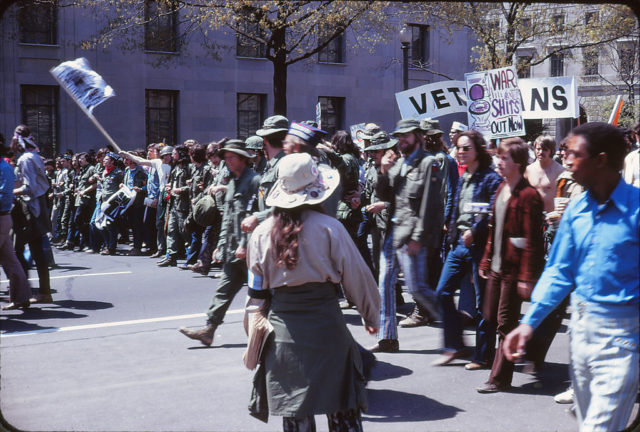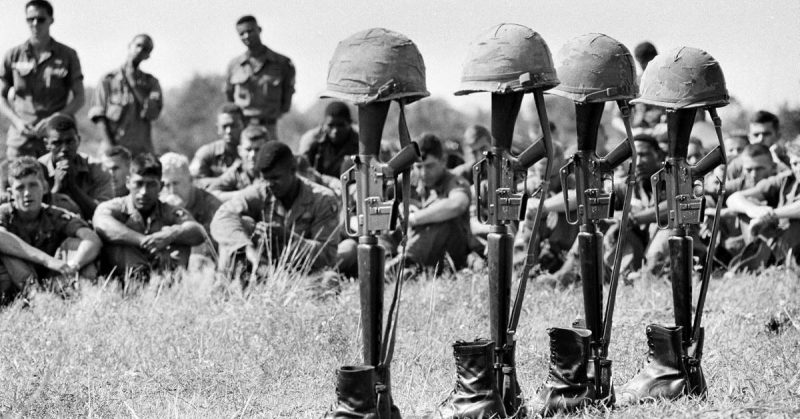The Vietnam War was also known as the Second Indochina War. In Vietnam, it was called Kháng chiến chống Mỹ which translates as the “Resistance War against America,” usually shortened to the “American war.”
As the US did not declare war on Vietnam but instead intervened and became the dominant player in a war that was already ongoing it should, strictly speaking, be referred to as a conflict rather than a war.
But to most, it remains best known as the Vietnam War.
The Conflict
The conflict was initially between North and South Vietnam, but many other countries became involved. It was played out not only in Vietnam itself but also in Laos and Cambodia. North Vietnam was a Communist state and had allies among the Soviet Union, China, and other Communist countries.
South Vietnam was supported by anti-communist countries including the United States and the Philippines as well as Vietcong to the south of Vietnam.
It lasted almost 20 years and was the most protracted conflict the US has engaged in throughout its entire history.
The United States withdrew its direct military involvement in 1973.
The conflict came to an end in April 1975 following the capture of Saigon by North Vietnamese forces, which was soon followed by the surrender of South Vietnam.
Just over a year later North and South Vietnam were unified under the Communist regime and the capital city Saigon given its current name Ho Chi Minh City.
Numbers
- In total, more than 3 million people were killed during the conflict – including 58,000 Americans.
- 9,087,000 military personnel served on active duty during the Vietnam Era (Aug. 5, 1964-May 7, 1975)
- Two-thirds of them were volunteers, not conscripts. A disproportionate number of young soldiers died in the conflict with over 60% of those killed being under the age of 21.
- The youngest was 16 while the oldest man killed in action was 62.
- 240 soldiers received the Medal of Honor for their efforts on the battlefield.
- Many American soldiers are still unaccounted for; in 2004 it was estimated that 1,875 are still missing.

Weapons used
The weapons used in Vietnam were more deadly and dangerous than anything that had been used in the past. For South Vietnam and the US, their strength lay in their superior air power, especially their use of American manufactured B-52 bombers capable of dropping thousands of pounds of explosives.
To make their bombing campaigns more effective, the US wanted to clear large areas of the jungle of vegetation which could provide cover and hiding places. It led to the deployment of chemical weapons in the form of herbicides; in particular the now notorious “Agent Orange.” It was used in such high concentrations that as well as destroying the foliage it also poisoned crops on the ground, leading to famine.
Napalm, which had previously been used in WWII and the Korean War was also used to a considerable extent in Vietnam.
Mỹ Lai Massacre
One of the best known and disturbing events of the Vietnam War was the My Lai Massacre in which US soldiers killed between 400 and 500 unarmed civilians.
The massacre took place in two small villages in South Vietnam. Although some of those who were responsible were charged, only the leader of the platoon was found guilty. His sentence for the killing of 22 villagers was to spend three and a half years under house arrest. The rest of the soldiers responsible received no punishment.
Soldiers within the battalion who had tried to stop the massacre and protect the civilians were initially denounced as traitors. It took thirty years before their action was given the recognition it deserved. One of the soldiers was posthumously awarded a medal for his attempt to shield civilians during the attack.
Unsurprisingly, the news of the My Lai Massacre prompted outrage both at home and abroad and played a role in strengthening the protests against the ongoing conflict in the US and internationally.

Protest Movements
The protest movement against the American involvement in Vietnam began among college students but quickly spread into many areas of US society. The war had been going on for some years, but it was not until 1965 that the protests become more widespread.
Although many American citizens volunteered for service, others objected in principle to taking part in the fighting. Among the most well-known protesters who refused to fight was the champion boxer, the late Muhammad Ali who declared himself a conscientious objector. He was given a prison sentence and banned from boxing for three years although the prison sentence was later overturned, and he was released.
As the protest movement was associated with the broader peace movement and its association with students, hippies and the drug culture, it was not taken very seriously and had little influence on the course of events.
The Vietnam War in popular culture
The Vietnam war has been the subject of films and books since the beginning of the US involvement up to the present time. During the war, there were some attempts to deal with themes that were relevant without mentioning the war directly. They included Joseph Heller’s novel Catch 22 and Kurt Vonnegut’s The Slaughterhouse Five as well as films such as M*A*S*H, which all had an anti-war element in them.
Later films dealt with the subject matter more directly and did not flinch from portraying the brutality of the war including events such as the My Lai Massacre. Among the most successful of these were Platoon – (Oliver Stone -1987), Apocalypse Now (Francis Ford Coppola – 1979) and Full Metal Jacket (Stanley Kubrick -1987).
Films and books also created a popular image of the Vietnam veteran as a damaged outcast unable to reintegrate into society as a result of his experiences in Vietnam. However, statistics show that on average Vietnam veterans are more likely to be employed and less likely to be in prison than the veteran population as a whole.
